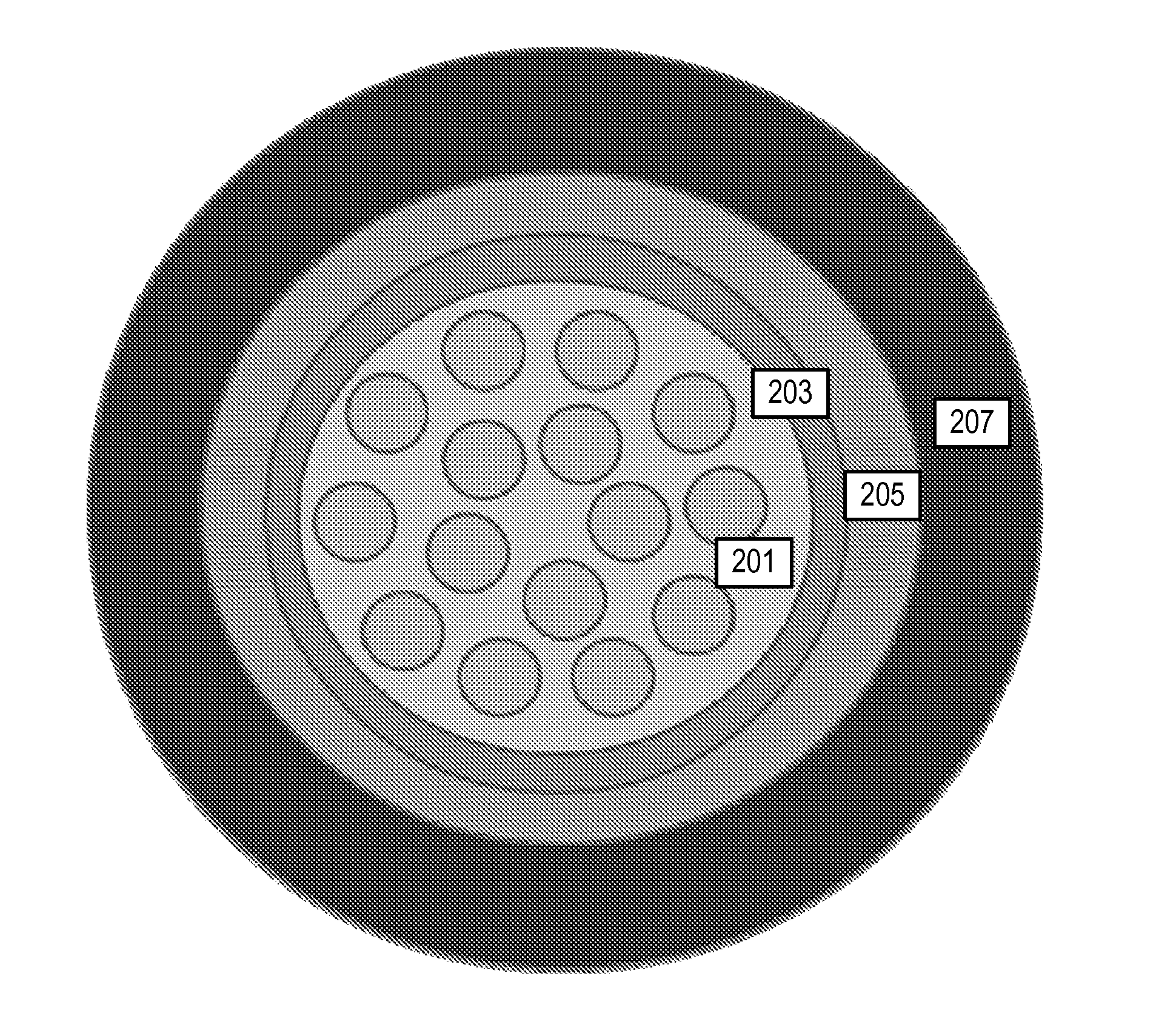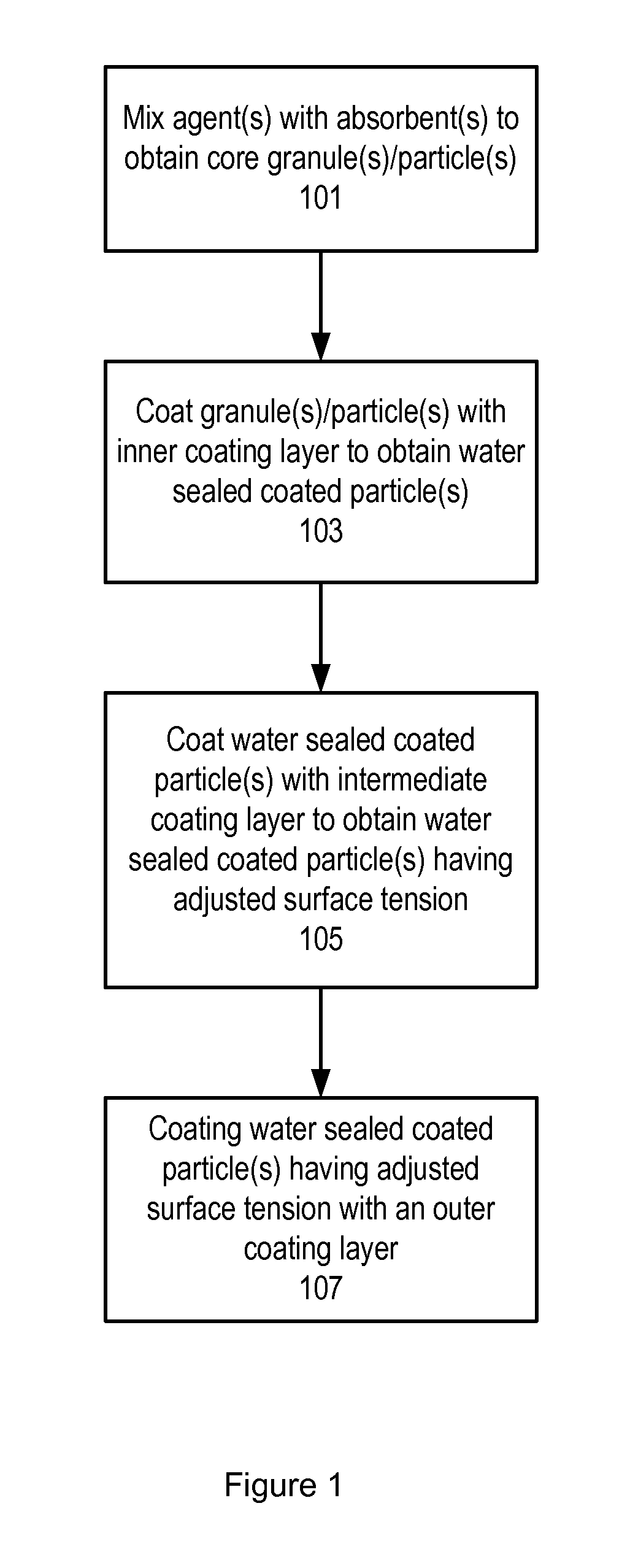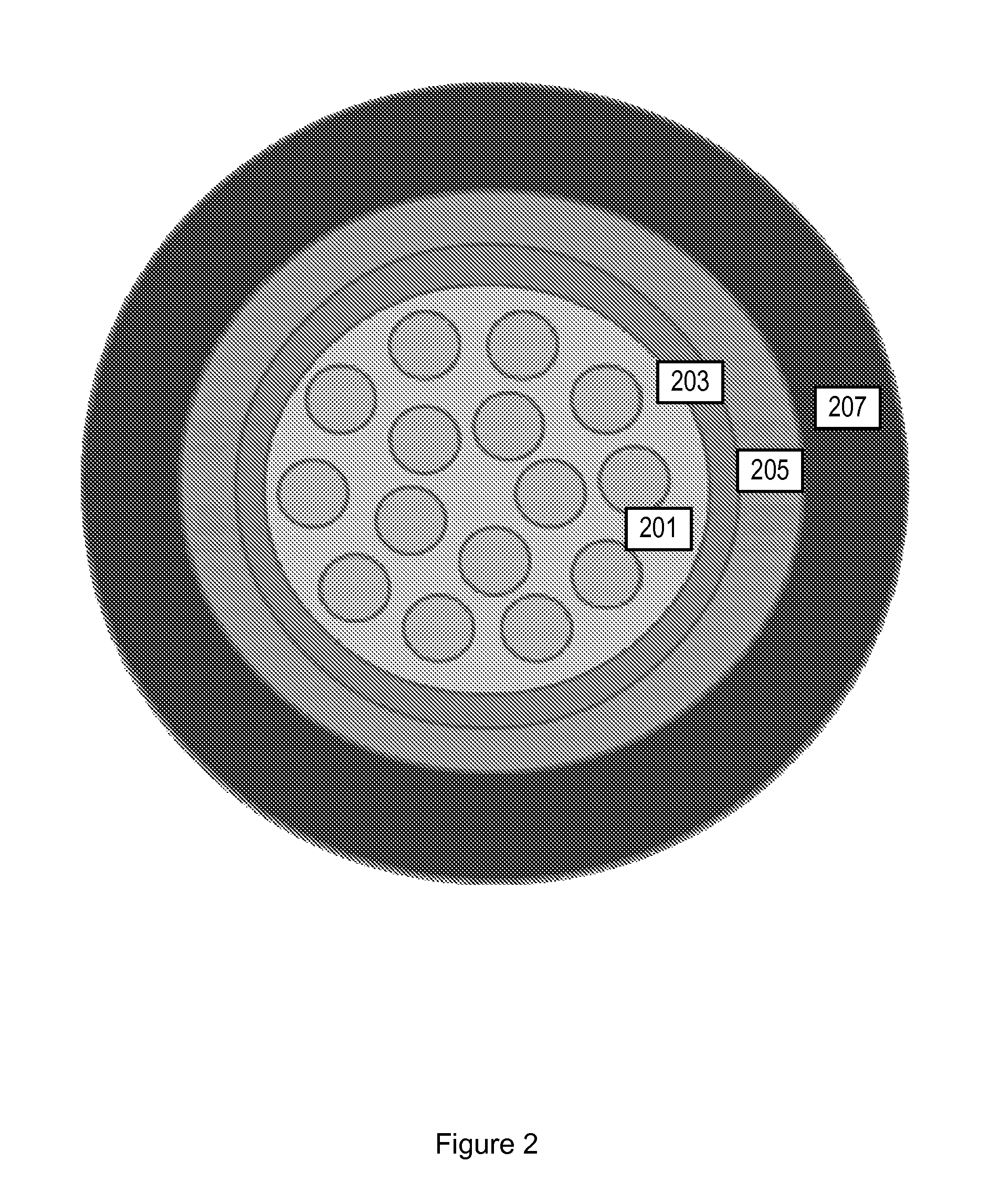Compositions and methods for improving stability and extending shelf life of sensitive food additives and food products thereof
a technology of food additives and compositions, applied in the field of food additives and food products, can solve the problems of many food additives such as fatty acids, forming longer chains, and being sensitive to environmental conditions, and achieve the effect of improving stability and extending shelf life of sensitive food additives
- Summary
- Abstract
- Description
- Claims
- Application Information
AI Technical Summary
Benefits of technology
Problems solved by technology
Method used
Image
Examples
example 1
[0322]800 g of Vivapur 12 (microcrystalline cellulose-MCC) was used as absorbent. An emulsion was prepared based on the following composition:[0323]Omega 3 oil=150 g[0324]Water=350 g[0325]Tween=5 g[0326]Tocopherol=0.15 g
[0327]MCC was first loaded into Innojet-IEV2.5 V2, and heated at 40° C. for 30 minutes while fluidizing prior to spraying the emulsion. The emulsion was then sprayed on microcrystalline cellulose using nitrogen as an inert gas.
[0328]After spraying about 100 g of emulsion, 20 g of Aerosil 200 was added and emulsion was sprayed again. After spraying 228.9 g of emulsion, an additional 10 g Aerosil 200 was added. The process was stopped and the container of Innojet-IEV2.5 V2 was changed to IPC 3 (IPC 1 was filled up until the upper edge of the container). 838 g of omega 3 oil-absorbed MCC were re-loaded and spraying of emulsion was renewed. After 338 g of emulsion, an additional 5 g Aerosil 200 was added. The process finished, yielding 923 g. The inlet temperature was co...
example 2
Non-Emulsion-Based Microencapsulation Process of Omega 3 and Fish Oil
[0334]Vivapur 105 (microcrystalline cellulose-MCC) (800 g) was mixed with concentrated Eicosapentaenoic acid (EPA 88%) of omega 3 oil for about 1 hour at room temperature.
[0335]The resulting mixture was then loaded into Innojet-IEV2.5 V2 and aerosil (25 g) was added. Poloxamer 188 (a triblock copolymer composed of a central hydrophobic chain of polyoxypropylene (poly(propylene oxide)) flanked by two hydrophilic chains of polyoxyethylene (poly(ethylene oxide)) (300 g) was melted and sprayed onto the mixture. The resulting mixture coated by poloxamer was discharged and the container of Innojet-IEV2.5 V2 10 was changed to IPC 3 (IPC 1 was filled up until the upper edge of the container). 300 g of the resulting mixture coated by poloxamer were re-loaded and an aqueous solution (5% w / w) of Na-carboxy methyl cellulose (CMC) and polyethylene glycol (PEG 400) (CMC:PEG 9:1) was sprayed. The inlet temperature was continuousl...
example 3
[0339]200 g of Vivapur 12 (microcrystalline cellulose-MCC) was first loaded into Innojet-IEV2.5 V2, and aerosil (4 g) was added. Then a mixture of fish oil (96.9 g) in fused stearic acid (115.1 g), which was previously melted at 70° C., was sprayed on microcrystalline cellulose to obtain coated particles. Then Poloxamer 188 (a triblock copolymer composed of a central hydrophobic chain of polyoxypropylene (poly(propylene oxide)) flanked by two hydrophilic chains of polyoxyethylene (poly(ethylene oxide)) (74 g) was melted and sprayed onto 367 g of the above coated mixture. Then an aqueous solution (5% w / w) of Na-carboxy methyl cellulose (CMC) and polyethylene glycol (PEG 400) (CMC:PEG 9:1), was sprayed onto 300 g of the resulting mixture coated by poloxamer. The inlet temperature was continuously kept at 40° C.
[0340]The process was stopped after reaching a weight gain of about 20% of Na-carboxymethyl cellulose / PEG to have the following composition:
AmountAmount[g]Substance[abs %]120.03...
PUM
| Property | Measurement | Unit |
|---|---|---|
| melting point | aaaaa | aaaaa |
| melting point | aaaaa | aaaaa |
| surface tension | aaaaa | aaaaa |
Abstract
Description
Claims
Application Information
 Login to View More
Login to View More - R&D
- Intellectual Property
- Life Sciences
- Materials
- Tech Scout
- Unparalleled Data Quality
- Higher Quality Content
- 60% Fewer Hallucinations
Browse by: Latest US Patents, China's latest patents, Technical Efficacy Thesaurus, Application Domain, Technology Topic, Popular Technical Reports.
© 2025 PatSnap. All rights reserved.Legal|Privacy policy|Modern Slavery Act Transparency Statement|Sitemap|About US| Contact US: help@patsnap.com



